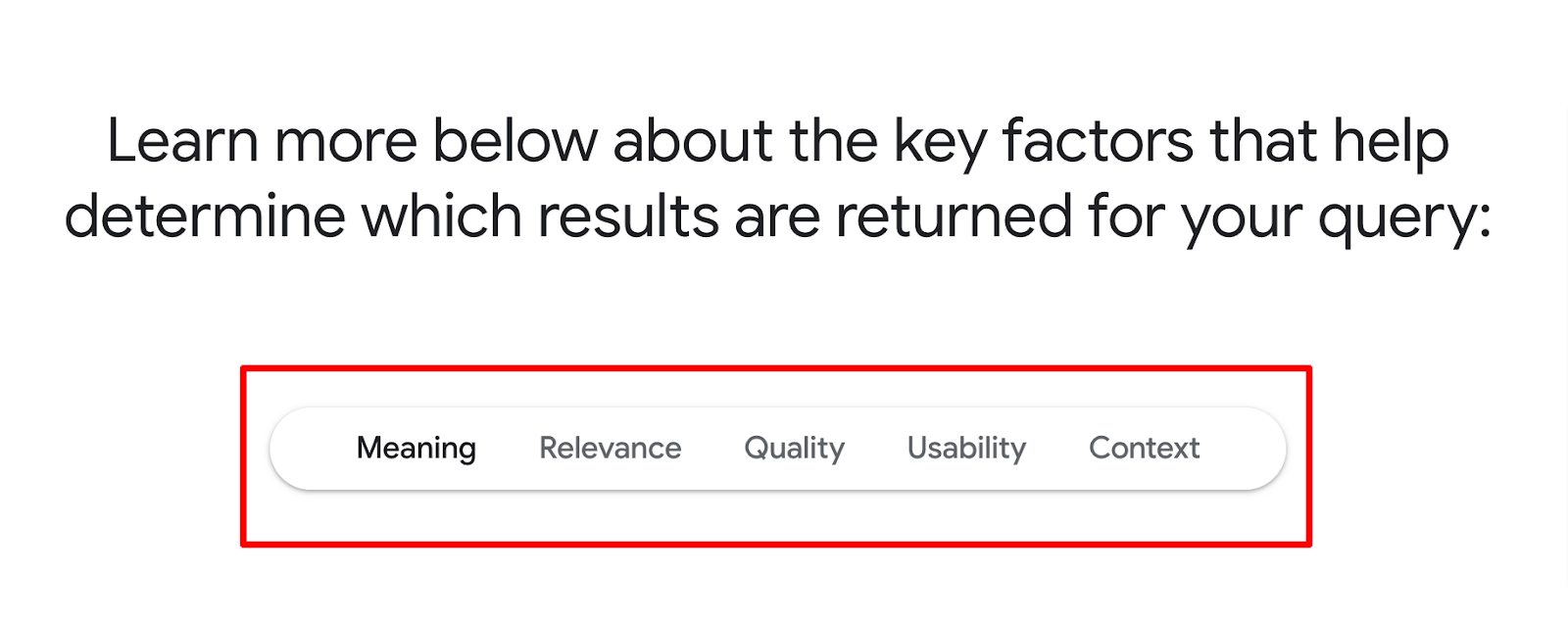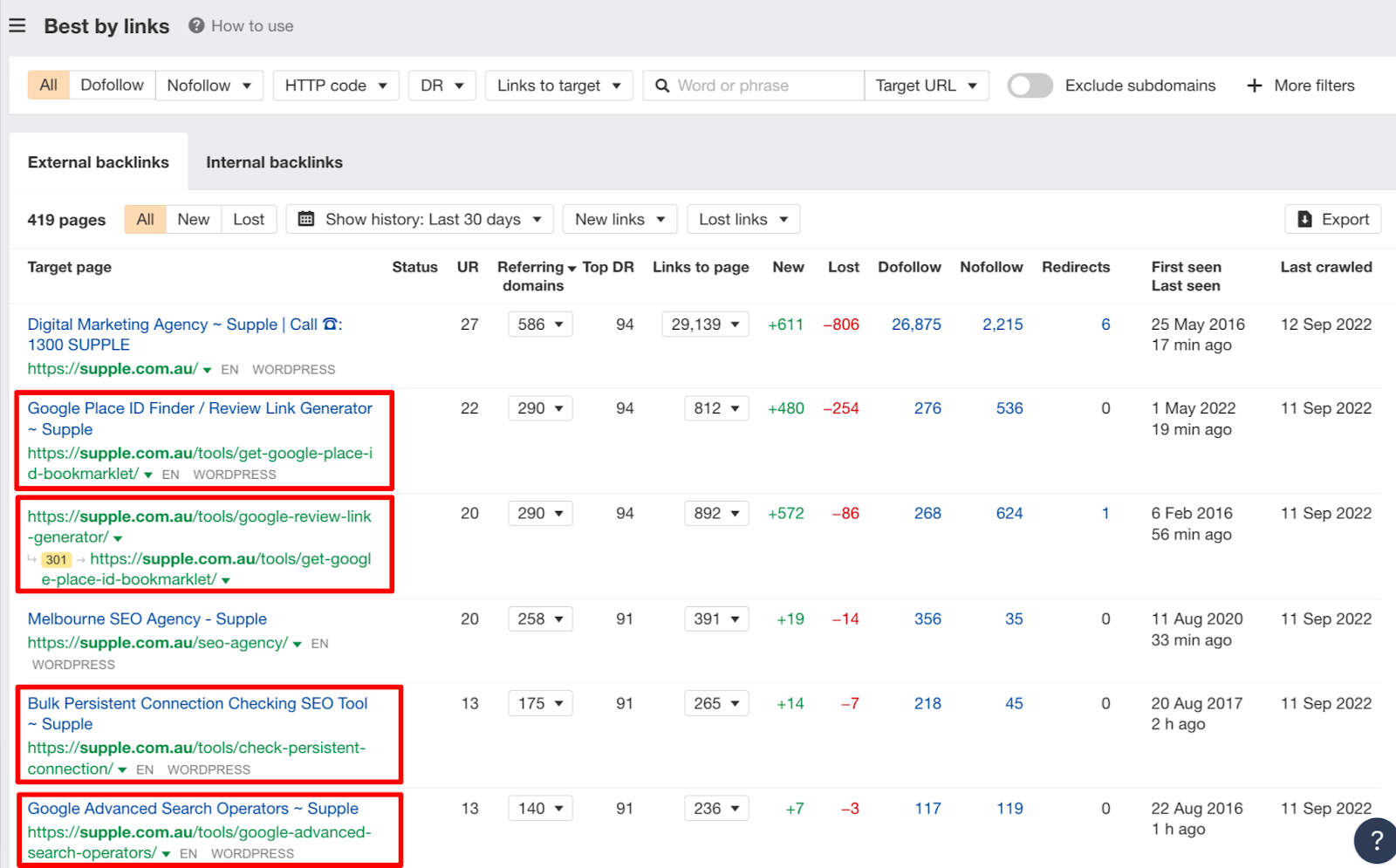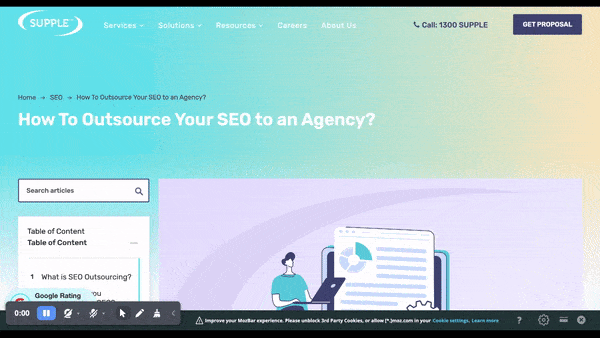Content Optimisation Strategies: 6 SEO Experts Share Their Most Effective Hacks
Today, most businesses are aware of the benefits of investing in SEO and content marketing. And because of that, there’s a humongous amount of content being published every day.
The result? — Intense competition to rank on search engines like never before.
Moreover, search engines also constantly keep improving their algorithms to show only the most relevant, high-quality, and authoritative content in search results. So if you want to drive traffic and revenue from organic search, creating and publishing average content won’t help.
That’s where content optimisation has a significant role.
In this guide, we’ll discuss different aspects of content optimisation and the most effective content optimisation strategies used by SEO experts around the globe.
But first, let’s cover some basics.
What is Content Optimisation?
Content optimisation is the process of improving content in order to increase its chances of achieving its intended goal. The goal can be anything — ranking on Google’s first page, driving traffic, generating leads, or conversion.
Content optimisation is mainly about prioritising users and creating content that provides genuine value to them. And then, making it search-friendly by applying different optimisation tactics.
Why is Content Optimisation Important?
Content optimisation is important because it helps your content (and website) get found by search engines and users. Basically, it increases your site’s visibility in organic search.
Let’s say, you’re an accounting firm based out of Brisbane. You’ve been publishing top-of-the-funnel content for your target audience with the goal of increasing your website traffic and driving brand awareness.
However, when you reviewed your content performance a few months down the line, you noticed that it’s not performing as expected. And you’re not able to drive much traffic from your blog.
It could be due to the reasons like:
- Your content doesn’t have relevant answers to users’ queries.
- The keywords you’re targeting have no (or very low) search demand.
- HTML source code (meta tags) of your webpage/website is not optimised. So Googlebot may not be able to understand your pages.
- Body content is different than what your title tags suggest, etc.
And there could be many more reasons.
So you can keep creating great content but it doesn’t amount to much if people can’t find your content in search results. That’s why you need to invest adequate time and effort in content optimisation.
Hence, you must create content that search engine bots can easily find & understand and at the same time resonates well with your audience. This requires you to integrate your content strategy with your overall marketing strategy.

I recommend combining all parties involved in marketing and brainstorming plans to help all parties. A content strategy underlines everything from SEO to email to even display, as long as you're doing it right. Before anything, make sure to identify the goals of content strategy. I recommend using SMART goal setting (which is an acronym for Specific, Measurable, Achievable, Relevant, and Time-Bound.
This way, you can create a unified brand message for your customers.
How will Generative AI Tools like ChatGPT Impact Content Optimisation?
Generative AI tools like ChatGPT can assist in many content optimisation tasks starting with content ideation, keyword suggestions (basic level), and outlines. Note that, you have to provide specific and detailed prompts to get better results.
Moreover, ChatGPT can be really helpful in generating SEO titles, meta descriptions, and structured data at scale. It can even proofread your content and make it grammatically correct.
In short, there are plenty of SEO use cases for generative AI tools.
While generative AI tools are good with short-form content like emails, product descriptions, and social posts, you can’t automate your long-form content creation with them — unless you want to publish content that lacks depth, unique insights, expertise, and first-hand experience.
All these qualities are required in your content to classify it as “helpful content”, according to Google’s helpful content update.

With the introduction of Chat GPT the demand for interactive content will only grow because this is a form of content/source of information that can’t easily be copied and interpreted by AI. The paradox is that you can also use Chat GPT to generate code and therefore use it to create interactive content like calculators, chatbots, browser extensions, etc.
So, generative AI tools will surely be helpful in many use cases around content creation and optimisation. But with that, there’ll also be an influx of generic and low-quality content, especially from publishers that think of these tools as replacements for human writers and editors.
That’s what makes the quality and helpfulness of content even more crucial in the coming days if you want to rank on top in search engines like Google.
Now, let’s dive into the different content optimisation strategies and experts’ opinions on them.
Content Optimisation for SEO
Needless to say, the main goal of content creation for a business is to attract visitors to the website and eventually convert them into loyal customers. Hence, first, you need to understand how your audience searches for information in search engines and figure out ways to appear in the top-ranking results.
The below tips will help you do that.
1. Target Keyword with Traffic Potential
SEO content optimisation starts with identifying the keywords that have decent traffic potential.
Imagine this: You’re ranking on top of the search results for a keyword but you don’t get any traffic from it. Most likely, it’s a keyword that doesn’t have any search demand.
Now, what’s the point of ranking for keywords that don’t drive any traffic to your website?
That’s why you need to identify the queries that people are searching for and it’s related to your business.
For this, conduct thorough keyword research using SEO tools like Ahrefs, Semrush, or Moz. These SEO tools will provide insights into the search volume, competition level, and traffic potential of different keywords.
Based on your niche authority and competitiveness of the keywords, you can select the keywords you want to target. For instance, if you have a well-established website with a high domain authority, you can target a high volume-high competition keyword.
At the same time, for a new business with no digital presence, it’s advisable to target less competitive long-tail keywords.
2. Satisfy User’s Search Intent
Google returns search results based on these key factors.
As you can see, Relevance is one of the five key factors that determine how Google will rank your content. So if you create high-quality content that is useful, contextual, and relevant to your audience’s search intent, it stands a good chance to rank.
Search intent is the underlying motivation or goal behind a user's search query. In simple words, it's the reason why someone is searching for a particular keyword or phrase on a search engine.
Search engines like Google strive to deliver the most relevant and useful results to users based on their search intent. The main four types of search intent are:
- Informational: The user is seeking information or answers to a specific question. For example, "how to bake a cake" or "what is the capital of France?"
- Navigational: The user is looking for a specific website or webpage. For example, "Facebook login page" or "YouTube homepage."
- Commercial investigation: The user is looking for a product or service to purchase. For example, "best running shoes for women" or "cheap flights to Paris."
- Transactional: The user is ready to make a purchase or take a specific action. For example, "buy iPhone 12" or "sign up for Netflix."
Search intent analysis helps you create content that aligns with the user's needs and goals, and can ultimately lead to higher engagement and conversions.
3. Optimise On-page SEO Elements
On-page SEO elements such as title tags, meta descriptions, header tags, image alt text, etc. help you improve the ranking of your webpage.
Here’s how you can optimise them:
- Title tag: Make sure your title tags are short (55-65 characters), descriptive, and communicate the page content clearly. Also, include your target keyword in the title tag.
- Meta description: Keep your meta descriptions short (less than 160 characters) yet descriptive and compelling. It is an opportunity to provide a brief summary of the page and entice users to click through to your website. Also, use your target keyword in it.
- Header tags: Use header tags like H1, H2, H3, and so on to organise your page content and make it easy for search engines to understand your webpage. Indicate what the section is about and also use your target keyword in header tags.
- URL structure: Keep URLs short and include your primary keyword. Also, use lowercase and avoid using special characters, numbers, and unnecessary information in URLs.
- Images: Optimise your images by compressing their size, using relevant names/captions, and adding descriptive alt text.
4. Use Content Optimisation Tools
Content optimisation tools help you save time and scale your content creation process. This way, you can publish more rank-worthy content and meet your marketing objectives.
Some tools like Semrush Writing Assistant, Surfer SEO, Clearscope, etc. help you optimise your content for your target keywords as you write. This helps you remove some of the guesswork around content optimisation and improve the quality and relevance of your content.

You can add web stories to your blog. It’s got an easy-to-use WP plugin. Add a video whenever possible, but if that isn’t possible, include audio. Google is trying to satisfy all search intent variations and Google wants to do this with the correct content types. If you can provide a page that covers more search intent variations, you have a page that can outrank everyone.
5. Add Internal and External Links
Internal and external links are critical components when it comes to optimising your content for search engines.
Internal linking helps users navigate through different pages on your website and find the content they’re interested in. This not only improves your user experience but also keeps visitors on your website for a longer time.
Moreover, internal links help search engines understand your site architecture better which improves your website’s crawlability. They also help you establish topical relevance between different pages of your website and pass link equity from one page to another.
Similarly, external links — or outbound links — strengthen the topical signals of your webpages and add context which helps search engines understand your pages better. Besides, linking to high-quality external content helps you provide value to your readers and gain their trust.
6. Focus on Featured Snippets
Featured snippets are search results that usually appear at the top of the SERPs. They’re designed to provide a concise and direct answer to a user's query — often without having to click on a link.
You can increase your search visibility and traffic by optimising your content for featured snippets since they occupy a lot more real estate on SERPs as compared to other ranking results.
Also, consider optimising your content for voice searches since more and more people prefer performing a quick voice search. You can target conversational long-tail keywords to become voice-friendly.
Once your content is ready for voice searchers, optimise it by adding structured data.

Structured data helps search engines understand the purpose of each element on your page. Specifically, Google is currently developing 'speakable structured data' to help the search engine understand the best-suited content for audio playback, which means it can make your content more relevant in specific queries made through voice search when applied.
To optimise for featured snippets:
- Research FAQs in Google’s People Also Ask (PAA) box and SEO tools
- Create content that directly answers common user queries or questions
- Use schema markup to help search engines understand your content
- Format your content in a clear and concise manner
If you don’t have in-house SEO experts, you can hire a competent SEO agency to help you with website content optimisation.
Content Optimisation for Engagement
While SEO content optimisation helps you get your potential customers to your website, optimising for engagement helps you retain them longer on your site. This way, you can engage them and increase your conversion opportunities.
Here’s how you can optimise your content for engagement.
1. Create Interactive Content
Interactive content requires active participation from users rather than just passively consuming it. Some of the most popular interactive content types include polls, quizzes, interactive infographics, calculators, surveys, and more.
Since interactive content requires users to actively engage with the content, it’s more effective for engagement. According to the Demand Gen Report, interactive content creates two times more engagement than static content.
So it helps you increase the time spent on a webpage, reduce bounce rates, and increase the likelihood of social sharing.

Based on my personal experience, tools and other forms of interactive content that offer the user an unique experience are incredibly valuable. Interactive content will keep visitors longer on your site, improve overall user engagement and help you to create brand awareness.
Consider the following tips while creating interactive content:
- Choose a topic that is relevant and interesting to your audience
- Use a tool like SurveyMonkey or Typeform to create surveys and quizzes
- Create interactive infographics using tools like Canva or Piktochart
- Include a call-to-action at the end of your interactive content to encourage further engagement or conversions
2. Add Visuals
Visual content such as images, videos, and infographics are incredibly effective at increasing engagement rates. Visuals are easier to consume and process than text-based content, and they can help break up long blocks of text and make the content more visually appealing.
Besides, visuals don’t just improve your engagement rates, they also result in increased traffic for your website. A global content marketing research by Semrush revealed that articles with seven or more images receive 116% more traffic than the ones without any images.

You can add web stories to your blog. It’s got an easy-to-use WP plugin. Add a video whenever possible, but if that isn’t possible, include audio. Google is trying to satisfy all search intent variations and Google wants to do this with the correct content types. If you can provide a page that covers more search intent variations, you have a page that can outrank everyone.
Consider the following tips while using visuals in your content:
- Choose high-quality visuals that are relevant to the content and visually appealing
- Use visuals to support and enhance the message of the content
- Optimise images for web use to ensure fast loading times
- Add alt tags to images to improve accessibility and SEO
Content Optimisation for Readability
As the competition to catch users’ attention is increasing, your content’s readability aspect plays a vital role in deciding whether it’ll be read or ignored.
Here are the tips to optimise the readability of your content:
1. Make it Easy-to-read
While creating business or marketing content, the most important thing to remember is that your readers consume your content to solve a specific problem. So, the sooner they get an answer, the better the effectiveness of your content.
The idea is to be effective, not just impressive. So, create content that reads effortlessly.

Everyone is so focused on long-form content, but a wall of text is intimidating to users. It creates a bad user experience. You want to make sure that your content is easily skimmable and that the user is able to find out their info, what you do, and who you are quickly.
Here’s what you can do to make your content more accessible and easier to read:
- Use simple words and avoid technical jargon
- Keep short sentences and paragraphs
- Write in active voice rather than passive voice
- Break up text with bulleted or numbered lists
- Make your content easily skimmable by using headings and subheadings
- Use enough white space and avoid large blocks of text
2. Improve User Experience
Even if you’ve created great content, visitors may not stick around for long if they don’t get a good user experience (UX). So you must pay equal attention to improving your webpage UX while optimising for readability.
This includes making sure that your content is easily accessible and visually appealing. Here are some tips to improve the user experience of your content:
- Ensure that your content is mobile-friendly and responsive
- Make sure your pages load fast
- Use a clear and legible font, with a font size that is easy to read
- Use contrasting colours to make text stand out
- Use images and other visual elements to break up text and make your content more visually appealing
- Use hyperlinks to provide additional context and resources for your readers
- Use attractive calls to action (CTAs)
Content Optimisation for Backlinks and Social Shares
Link building and social shares are the most influential off-page SEO elements. In fact, Google’s Andrey Lipattsev has confirmed that backlinks are one the strongest ranking signals.
So you need to build a solid backlink profile for your website and encourage your audience to share your content on social platforms. Here’s you you can go about it:
1. Create Linkable Content Assets
One of the most effective ways to generate backlinks is to create high-quality content assets that are worth linking to and sharing.
As a result, the other websites (or content creators) would happily link to your content to provide value to their audience. Some examples of linkable assets include:
- Infographics, statistics compilation, videos, and GIFs
- Original research and studies
- Free tools, calculators, and lead magnets
- Case studies
- In-depth comprehensive guides and tutorials, etc.

Usually, the content that gets massive amounts of backlinks are the ones that provide some unique value or comprehensive information than the other available content. In our case, we get the highest social shares and backlinks to our marketing and SEO tools.
For example, take a look at the pages that generate the highest backlinks for our website.
As you can see three of the top five most linked pages are the free SEO tools like Review Link Generator, Persistent Connection Checking Tool, and Google Advanced Search Operators.
Similarly, our top content from the social shares standpoint are the tools pages.
Thus, you can create some valuable tools or calculators that serve the users in your niche to get more backlinks and social shares.
2. Use Expert Quotes in your Content
The second-best thing about using expert quotes or creating expert-led content is that the experts you’ve featured in your article would also like to share your content in their social profiles and communities. This amplifies your content distribution.
Now, the best thing: Expert insights increase the credibility of your content and provide unique POVs (point of views) to your audience.
If you’re following our blog, you’d know that we frequently publish articles with expert opinions. Well, you’re already reading one right now!
Follow these tips for creating expert-led content:
- Choose experts who have authority and credibility in your industry
- Use quotes to support or expand on the main points of your content
- Provide context for each quote and explain why it's relevant to your topic
- Attribute each quote properly to the expert who said it
3. Ensure Visibility of Social Share Buttons
Most readers don’t make it to the end of the blog post or article. So if you place your social share buttons at the bottom of the page, there are high chances that readers may ignore them.
So, if you want to encourage your users to share your content, make sure your social share buttons are visible through-out the page. A smart hack is using the anchored social buttons on your webpage.
Here’s how we do it:
As you can see, the social buttons on the right are anchored on the page and stay visible even when you scroll down (or up).
This way, readers are more likely to share your content because they don’t have to search for the share buttons.
Content Optimisation for Conversion
No matter how much traffic you drive from SEO, engage users, and earn backlinks & social shares, it’s all pointless if you can’t convert visitors into paying customers over time.
Let’s understand how to do that.
1. Prioritise your Target Audience
The first step in optimising your content for conversion is to prioritise your target audience. Your content should be tailored to meet the needs, preferences, and pain points of your target audience.
For this, you must identify the right target audience for your marketing campaigns. For example, the content type, format, and angle for the audience of small D2C business on Shopify platform would be totally different than that of a giant B2B eCommerce brand.

Your end goal will be to ensure prospective customers have all the tools and information available to them in their buying journey to complete their purchase. By planning ahead and knowing what your goal is, conducting your research, identifying your customer persona and their needs, you will be able to target and encourage that final goal through tailored content and a streamline tone of voice for your brand.
Follow these tips to create content that drives conversion:
- Conduct research to understand your target audience's demographics, behaviours, and interests
- Form buyer personas and create targeted content that resonates with them
- Address your audience's pain points and provide solutions to their problems
- Use language and tone that speaks directly to your audience and inspires action
2. Optimise your CTAs
Calls-to-action (CTAs) are an important part of content since they inspire readers to take action. So optimising your CTAs can make a significant impact on your conversion rates.
In addition to creating compelling CTAs, you also need to ensure they’re well-positioned, well-designed, and aligned with your content goal. Besides, you also have to consider the stage of your readers in their buying journey.
Simply put, your CTAs for top-funnel content should be optimised for the awareness stage of buyers. Similarly, mid-funnel content CTAs need to be optimised for the consideration stage and bottom-funnel content CTAs for the decision stage.
Here are some tips for optimising your CTAs:
- Use action-oriented language that encourages the reader to take action
- Be clear and specific about the desired action, such as "buy now" or "sign up today"
- Use contrasting colours to make your CTAs stand out from the rest of the content
- Place CTAs in strategic locations on your website, such as at the end of a blog post or on a landing page
- Conduct A/B tests to discover the CTAs that work best for your site
Final Thoughts
Content optimisation is a crucial cog in your content marketing machine and helps you achieve your overall marketing goals — if done right. It can significantly improve your search engine rankings, drive visitors to your site, and convert them into leads and customers.
Most importantly, it can help you establish solid brand authority in your niche over time. So learn more about different aspects of content optimisation, apply the actionable insights given by the SEO experts in this article, and improve your brand’s digital presence.
That said, give us a shout if you want our experts to help you with your content optimisation strategy.
DIGITAL MARKETING FOR ALL OF AUSTRALIA
- SEO AgencyMelbourne
- SEO AgencySydney
- SEO AgencyBrisbane
- SEO AgencyAdelaide
- SEO AgencyPerth
- SEO AgencyCanberra
- SEO AgencyHobart
- SEO AgencyDarwin
- SEO AgencyGold Coast
- We work with all businesses across Australia






